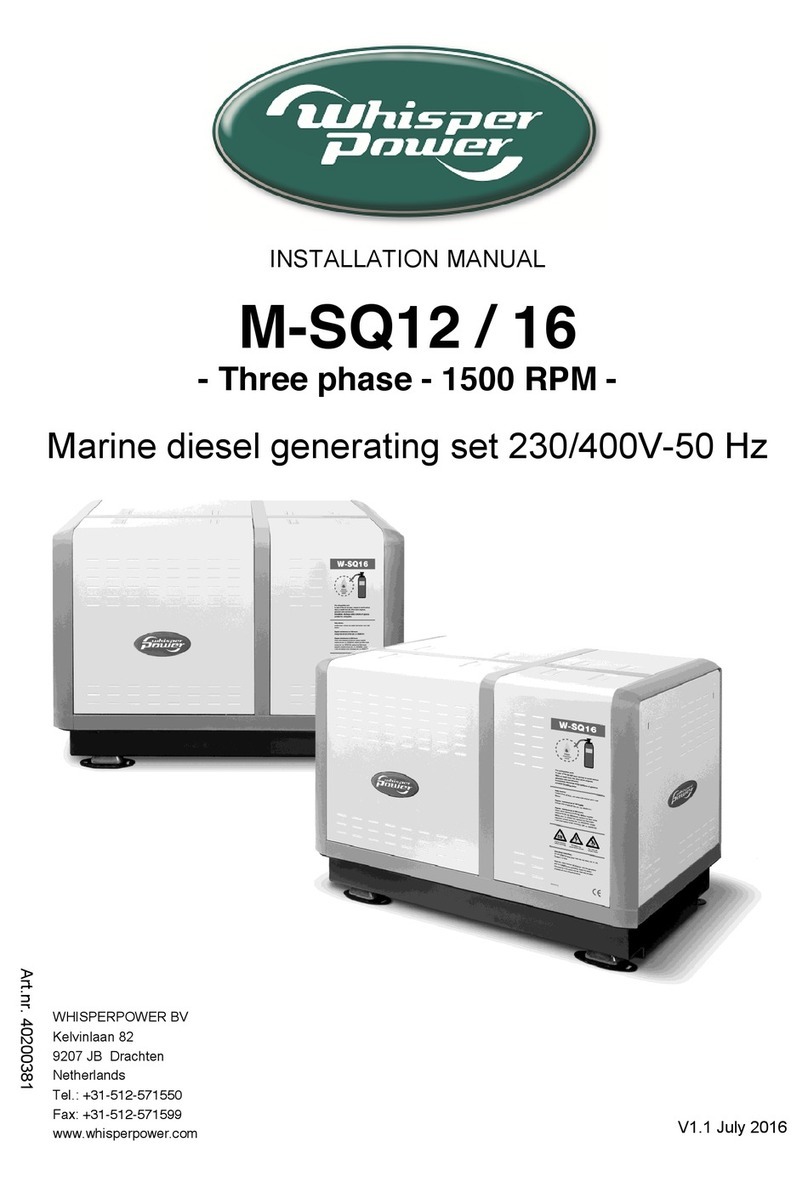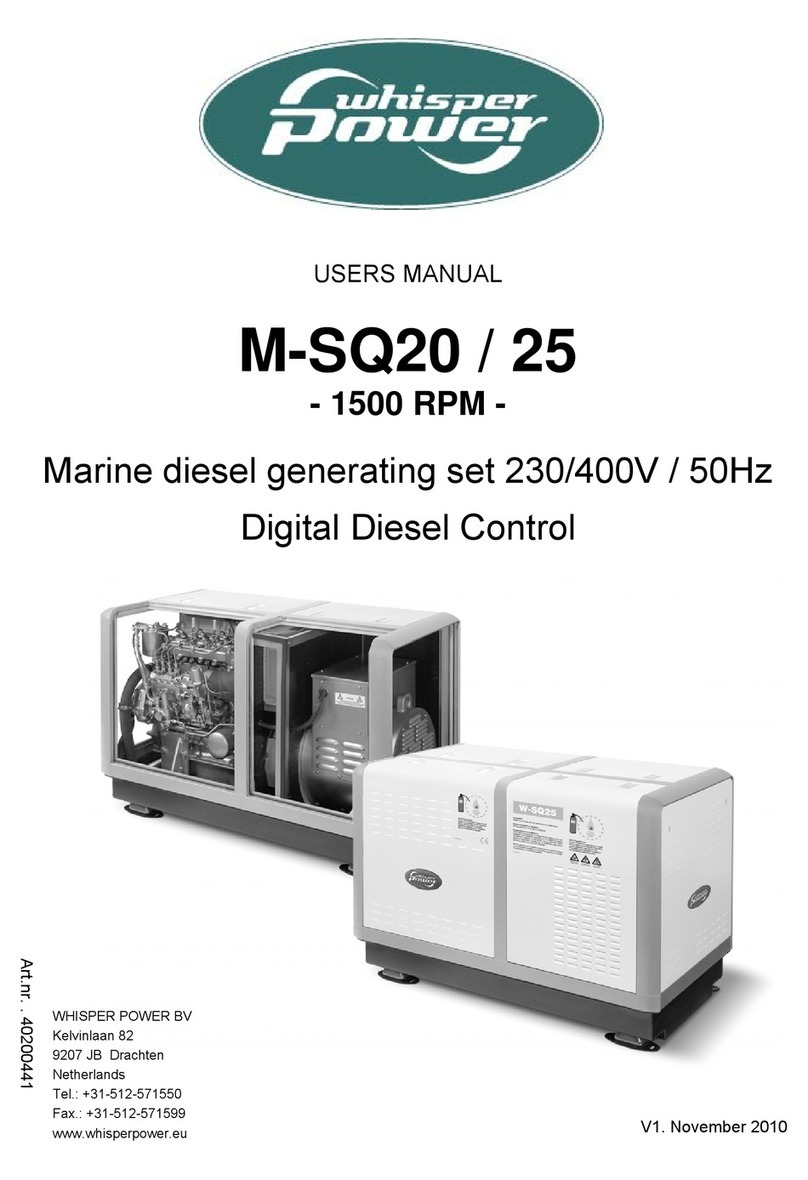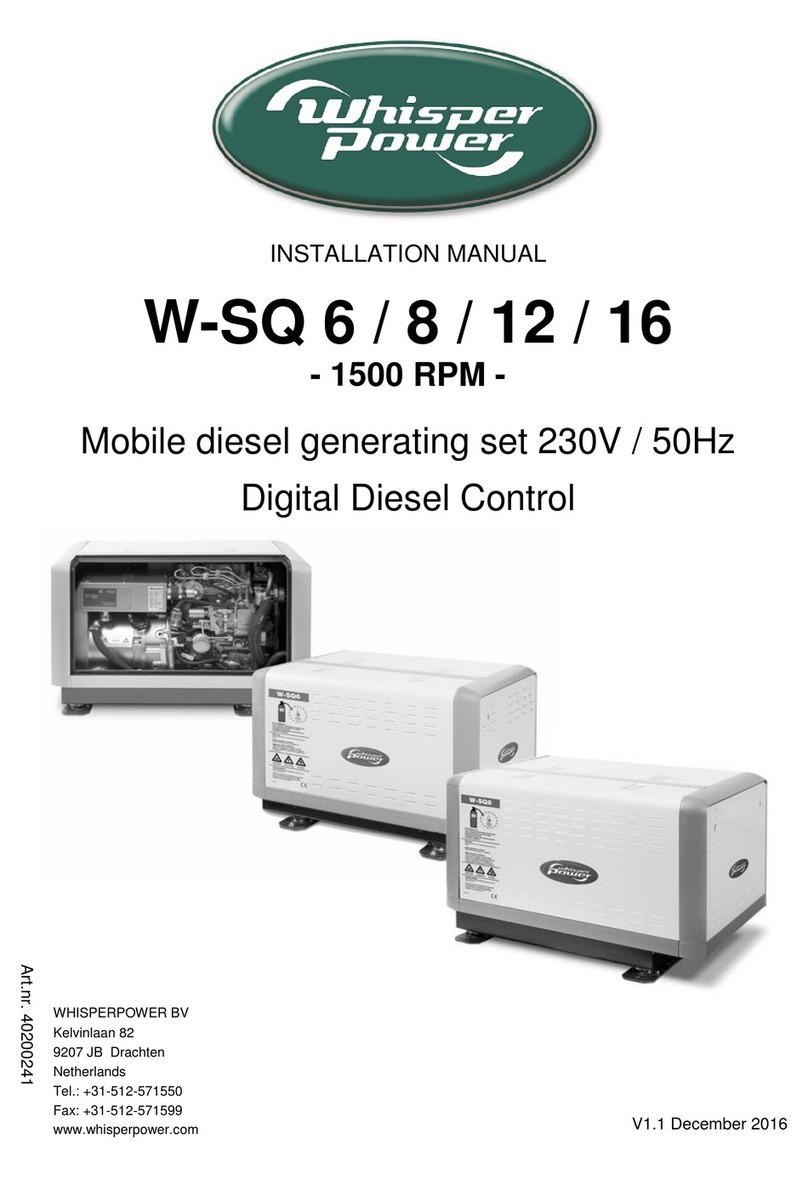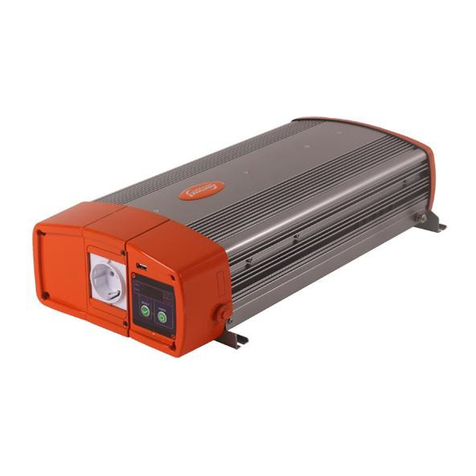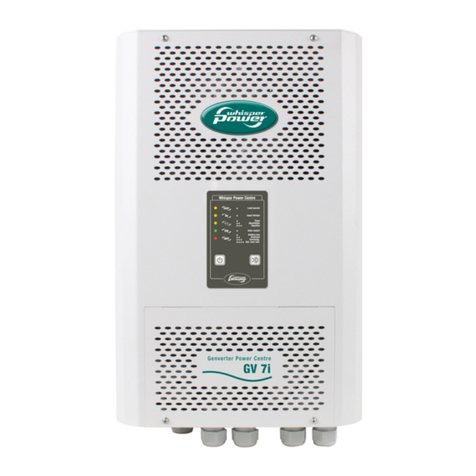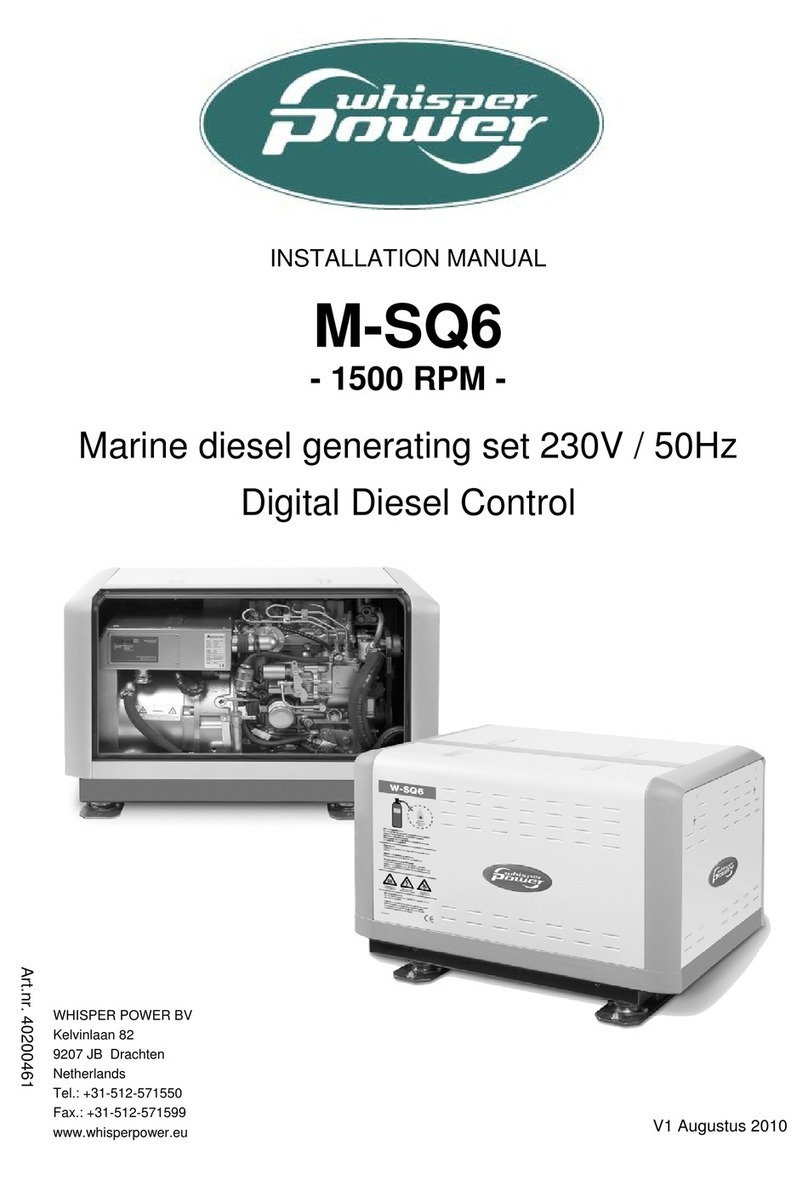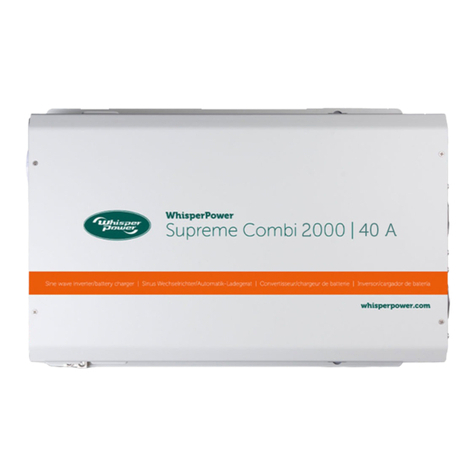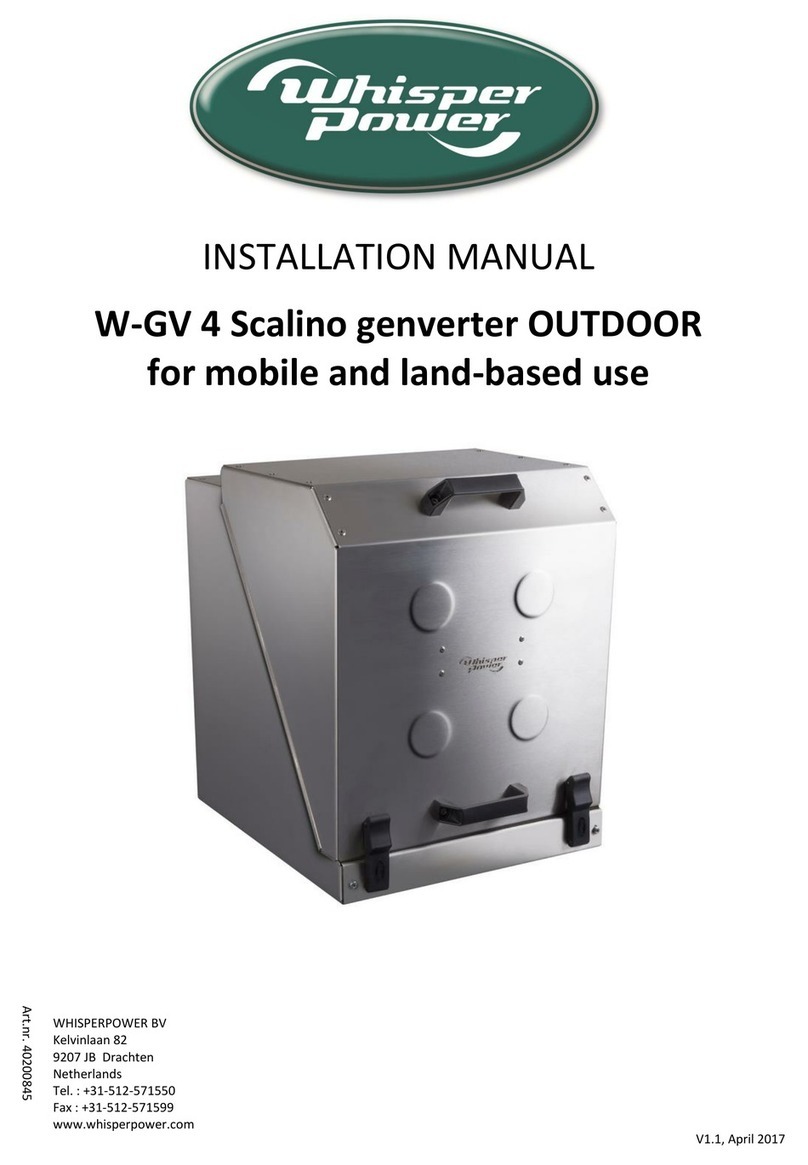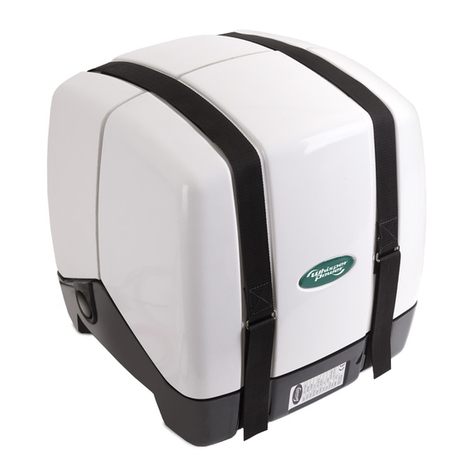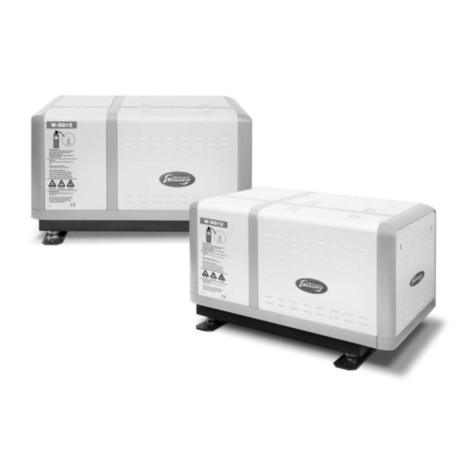
INTRODUCTION
4
January 2009 / W-SQ25 for mobile applications / EN
1 INTRODUCTION
1.1 GENERAL
The W-SQ25 Mobile Diesel Generating set is
manufactured and marketed by Whisper Power.
It is important to read this manual before installing and
operating the generating set. Both safety and durability
rely very much on the correct identification, installation and
a good understanding of ratings, features, design,
maintenance and operation procedures.
The information, specifications, illustrations and
statements contained within this publication are given with
our best intentions and are believed to be correct at the
time of going to press.
All of the specifications, provisions and instructions
contained in this manual apply solely to standard versions
of the Whisper Power W-SQ25 generating set.
This manual is valid for the following models:
Part number Description
41101020 W-SQ25 230V 1500rpm
Mobile / keel cooling
41101026 W-SQ25 230V 1500rpm
Mobile / keel cooling -ungrounded
41101320 W-SQ25 230V/400V 1500rpm
Mobile / keel cooling
41101326 W-SQ25 230V/400V 1500rpm
Mobile / keel cooling -ungrounded
For other models see other manuals available on our
website: www.whisperpower.eu.
Our policy is one of continued development and we re-
serve the right to amend any technical information without
prior notice.
Whilst every effort is made to ensure the accuracy of the
particulars contained within this publication neither the
manufacturer, distributor, or dealer in any circumstances
shall be held liable for any inaccuracy or the
consequences thereof.
WARNING
A warning symbol draws attention to special
warnings, instructions or procedures which, if
not strictly observed, may result in damage or
destruction of equipment, severe personal
injury or loss of life.
DANGER
This danger symbol refers to electric danger
and draws attention to special warnings,
instructions or procedures which, if not strictly
observed, may result in electrical shock which
will result in severe personal injury or loss of
life.
DANGER
Realise that people are not used to have
230V/400V available on a vehicle. Put
warning signs on wall sockets and on junction
boxes. Instruct non-regular users of the
vehicle. Warn maintenance personal of
garages that do service on the vehicle.
1.2 SERVICE AND MAINTENANCE
Regular service and maintenance should be carried out
according to the directions in this manual. For service and
maintenance one can appeal to the manufacturer or the
dealers.
1.3 GUARANTEE
Whisper Power guarantees that this generating set has
been built according to good workmanship, according to
the specifications in this manual and according to
European Community safety regulations.
During production and prior to delivery, all of our
generating sets are tested and inspected.
The well functioning of this generating set is subject to
guarantee. The period and conditions of this guarantee are
laid down in the general conditions of delivery as
registered with the Chamber of Commerce and Industries
for the North of the Netherlands number 01120025 and
are available on request. The guarantee period is two
years, limited to 1000 running hours. Some aspects of our
guarantee scheme are given here in more detail:
Guarantee does not cover failures that are caused by
misuse, neglect or a faulty installation.
Example 1. Faulty installation:
Overheating of the engine or alternator is the most
common cause of problems with mobile generating sets.
These problems are caused by poor circulation of the
cooling liquid due to wrong routing of the pipes to the
radiator: bents will capture air bubbles causing “air-lockes”
blocking the circulation of the liquid. Other examples of
installation problems are hot air circulation into the radiator
